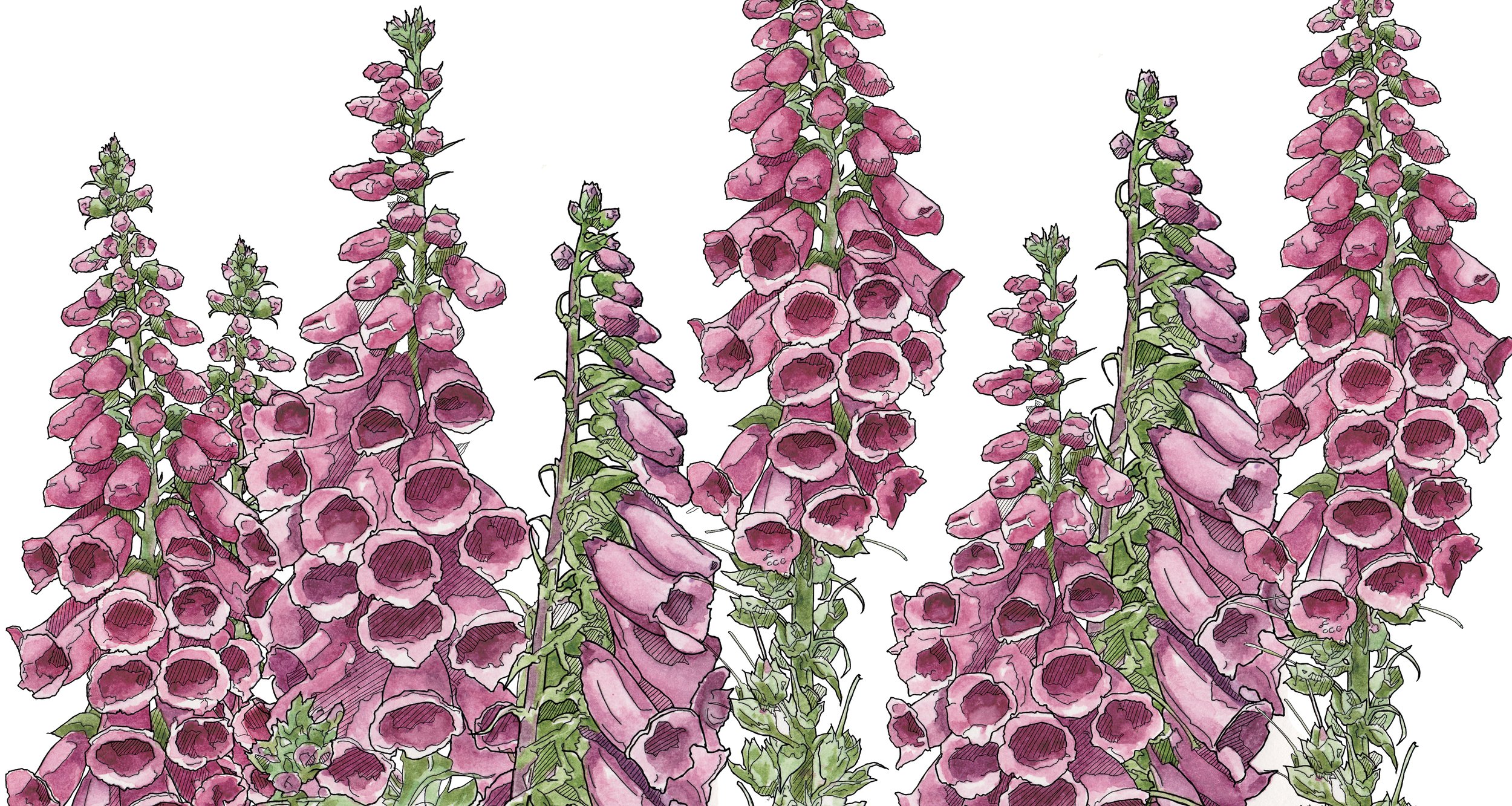Digitalis purpurea
Foxglove
Digitalis purpurea is a stunning species of Foxglove with many cultivars to choose from. They are beautiful right now at the nursery!
Digitalis purpurea is considered a biennial, which means they produce leaf and root in their first year and flower and seed in their second year. They contain both characteristics of annuals and perennials, as well as being over zealous seeders.
Other perennial foxglove species include the Strawberry Foxglove (Digitalis mertonensis), the Rusty foxglove (Digitalis ferruginea) and the pale yellow Digitalis grandiflora.
Digitalis purpurea cultivars
available
____________
*Digitalis Alba
*Digitalis Apricot Beauty
*Digitalis Excelsior
*Digitalis Pam’s Choice
*Camelot Series: Cream,
White, Lavender & Pink
*Dalmation Series:
Purple & Peach
*Digitalis Artic Fox Rose
A Foxglove in its second year presenting a spectacular spike of flowers.
**************************
GROWING DIGITALIS
Deer Resistant!
Digitalis prefers moist, organically rich, acidic, well-drained soil in full sun to part shade. Soil must not be allowed to dry out. They bloom in late spring. Removal of flower spikes is not recommended if you want reseeding and colonizing. You will get smaller side spikes but it’s that primary spike that is most impressive. Since they are biennials, Digitalis reseed and colonize in the most interesting and beautiful ways.
Digitalis has striking colors and good architectural height in garden beds.
Some cultivars grow to 5 ft tall while some grow between 3-4ft tall (Camelot Series).
Foxglove Alba
Foxglove Pams Choice
Foxglove Excelsior
Foxgloves ‘Apricot’
info
___________
Bloom Time: May to June
Full sun to part shade
Height: 2 to 5 feet
Attracts: Hummingbirds
Tolerate: Rabbit, Deer
Suggested Use: All kinds
of ornamental beds & gardens.
Also, great in naturalized areas
& woodland gardens.
Foxgloves ‘Apricot Beauty’ in the back
**************************
DIGITALIS: HISTORY AS A MEDICINAL PLANT
A SOURCE FOR DIGOXIN USED TO TREAT CARDIAC ARRHYTHMIA
Vineyard Gardens front bed with many biennials on display; Angelica, Echium, a couple types of Digitalis and Fennel.
Digitalis is commonly used as an ornamental plant for gardeners but it has a long history for medicinal use as well. Their dried leaves contain the drug digoxin that is used to treat cardiac arrhythmia. It was popularized in 1785 by a British physician that spoke of Digitalis purpurea helping the heart work more efficiently. A curious story revolves around Vincent Van Gogh and his connection to the use of digitalis to treat his epilepsy. The over use of the chemical digoxin found in digitalis can affect one’s eyesight, by tipping the vision color scale to a yellow tint and seeing halos around objects. People have theorized that Van Gogh was affected by these side effects, alluding to his yellow period and his frequent use of halos in his paintings. In a self portrait Van Gogh is depicted holding a foxglove plant and two paintings of his doctor holding digitalis. However, this may be pure speculation about Van Gogh’s color palette choice but what is known is digitalis has been used for centuries for medicinal purposes.
**************************
Foxglove Fergs pale yellow
Foxglove covering past foliage
Foxglove Digitalis Camelot Lavender
learn more












